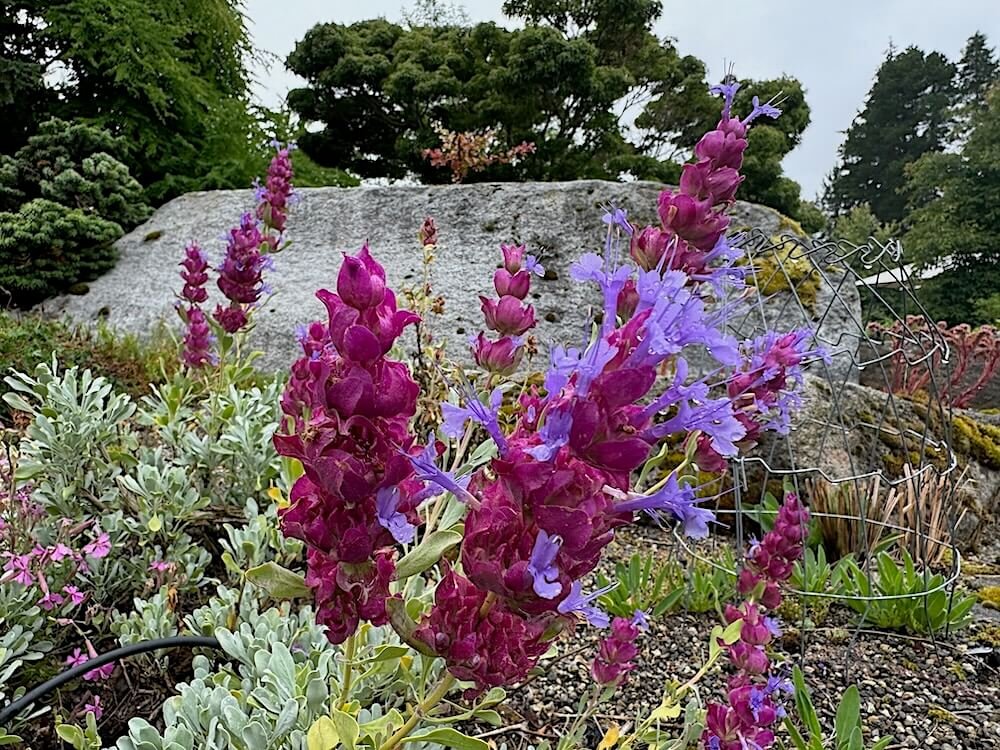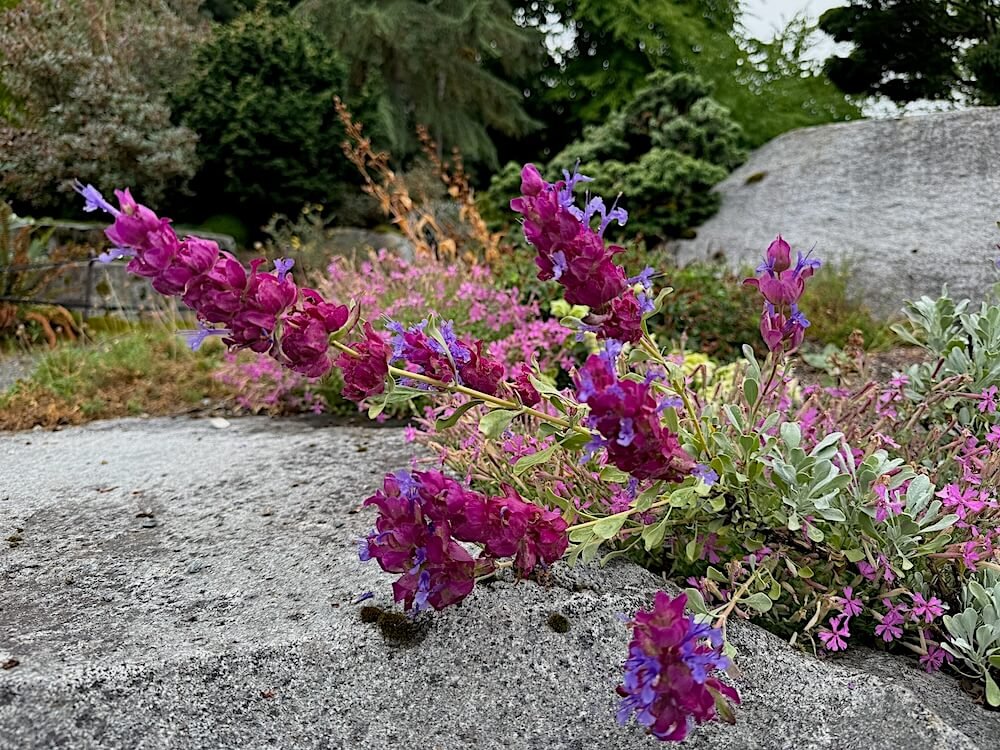DESCRIPTION
Salvia pachyphylla, commonly known as rose sage or mountain desert sage, is a perennial shrub renowned for its silvery, aromatic foliage and vibrant flower spikes. Blooming from mid-summer through early autumn, it produces dense clusters of violet-blue flowers, often surrounded by showy, rose-colored bracts. These blossoms are a favorite of pollinators, particularly bees and hummingbirds, adding lively activity to the garden.
Native to the arid mountain regions of California and Nevada, Salvia pachyphylla thrives in harsh conditions, making it an excellent choice for xeriscaping or low-maintenance landscapes. Its ability to withstand drought and its unique color palette make it an enduring favorite for gardeners seeking plants that combine resilience with ornamental appeal.
DESCRIPTION
Salvia pachyphylla, commonly known as rose sage or mountain desert sage, is a perennial shrub renowned for its silvery, aromatic foliage and vibrant flower spikes. Blooming from mid-summer through early autumn, it produces dense clusters of violet-blue flowers, often surrounded by showy, rose-colored bracts. These blossoms are a favorite of pollinators, particularly bees and hummingbirds, adding lively activity to the garden.
Native to the arid mountain regions of California and Nevada, Salvia pachyphylla thrives in harsh conditions, making it an excellent choice for xeriscaping or low-maintenance landscapes. Its ability to withstand drought and its unique color palette make it an enduring favorite for gardeners seeking plants that combine resilience with ornamental appeal.



